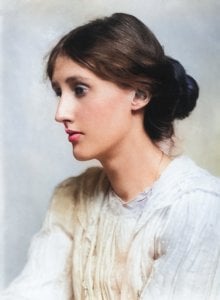Overview
Virginia Woolf’s Mrs Dalloway unfolds over a single June day in post–World War I London, tracing the intersecting inner lives of Clarissa Dalloway, a society hostess preparing for an evening party, and Septimus Warren Smith, a shell-shocked veteran haunted by the war. Through fluid shifts in perspective and a stream-of-consciousness style, the novel maps how private thoughts and public rituals, memory and current sensation, braid together in the modern city. Time is marked by Big Ben and echoed in the rhythms of footsteps, buses, and skywriting, as Woolf composes a portrait of a society at once glittering on the surface and fractured within.
Plot
Clarissa Dalloway leaves her Westminster home to buy flowers, relishing the freshness of the morning and the vibrancy of London. Passing acquaintances awaken memories: her youthful summers at Bourton with Peter Walsh and Sally Seton; the decisive moment she rejected Peter’s marriage proposal to marry Richard Dalloway, a solid, kind Member of Parliament. The backfire of a motorcar and an airplane spelling letters across the sky knit strangers together briefly in curiosity, then release them back into solitary thought.
Among those strangers are Septimus and his Italian wife, Rezia. Once an idealistic young poet, Septimus is now ravaged by “nerves” and visions of his dead comrade, Evans. He feels persecuted by the modern world and the banal certainties of men like Dr. Holmes and Sir William Bradshaw, whose prescription is submission to rest, routine, and institutional care. Rezia longs for the husband she knew, even as she struggles to keep him safe.
Peter Walsh returns from India and visits Clarissa unexpectedly at midday. Their conversation recapitulates old tensions and unspoken desires; when Richard returns later with roses, intending to tell Clarissa he loves her, he cannot say the words. Clarissa, resting in her narrow attic room, contemplates aging, intimacy, and the tenuousness of identity, then resumes preparations for her party.
In the afternoon, under the pressure of Bradshaw’s impending intervention, Septimus chooses death rather than surrender, hurling himself from a window. As night falls, guests converge at Clarissa’s house: politicians and titled figures, old friends Hugh Whitbread and Lady Bruton, Clarissa’s daughter Elizabeth with her severe tutor Miss Kilman, a radiant Sally Seton now Lady Rosseter, and, at last, Peter. The Prime Minister’s brief appearance flatters the room’s social ambitions. When Lady Bradshaw mentions the suicide of a patient, Clarissa withdraws, imagining the young man and recognizing in his defiance an answer to her own fear of annihilation beneath the demands of propriety. She returns to the party, composed and luminous, as Peter watches, overcome by the old mixture of terror and joy her presence inspires.
Characters
Clarissa, alert to beauty yet anxious about emptiness, balances the roles of wife, hostess, and self. Richard offers steadiness and affection, though emotional reticence constrains him. Peter is passionate, mercurial, forever sharpening his knife and testing the limits of feeling. Sally embodies youthful rebellion and, in middle age, a grounded warmth. Elizabeth, poised between obedience and independence, glimpses a future beyond her mother’s circle. Septimus and Rezia carry the novel’s starkest truths about love, vulnerability, and the costs of war.
Themes
Time and memory braid private and public life; the “leaden circles” of the clock punctuate consciousness. Social performance collides with authentic feeling. War’s psychic wreckage shadows peacetime surfaces. Questions of sexuality and intimacy thread through Clarissa’s recollections of Sally and her uneasy bond with Peter. Power, class, and medical authority appear in Bradshaw’s doctrine of proportion, against which Septimus’s refusal becomes a tragic assertion of self.
Style and Structure
Woolf’s free indirect discourse and fluid transitions dissolve chapter boundaries into a continuous urban symphony. Recurrent motifs, flowers, windows, waves, bells, bind disparate lives. One day contains a lifetime’s reckoning, and a party becomes a crucible where past and present flicker, revealing the fragile, stubborn spark of being.
Mrs. Dalloway
The narrative follows the character of Clarissa Dalloway, an upper-class English woman, as she prepares for a party in post-World War I London. The story also depicts the journey of Septimus Warren Smith, a World War I veteran suffering from shell shock.
Author: Virginia Woolf
 Virginia Woolf, a pivotal modernist author and key figure in 20th-century literature.
Virginia Woolf, a pivotal modernist author and key figure in 20th-century literature.
More about Virginia Woolf
 Virginia Woolf, a pivotal modernist author and key figure in 20th-century literature.
Virginia Woolf, a pivotal modernist author and key figure in 20th-century literature.